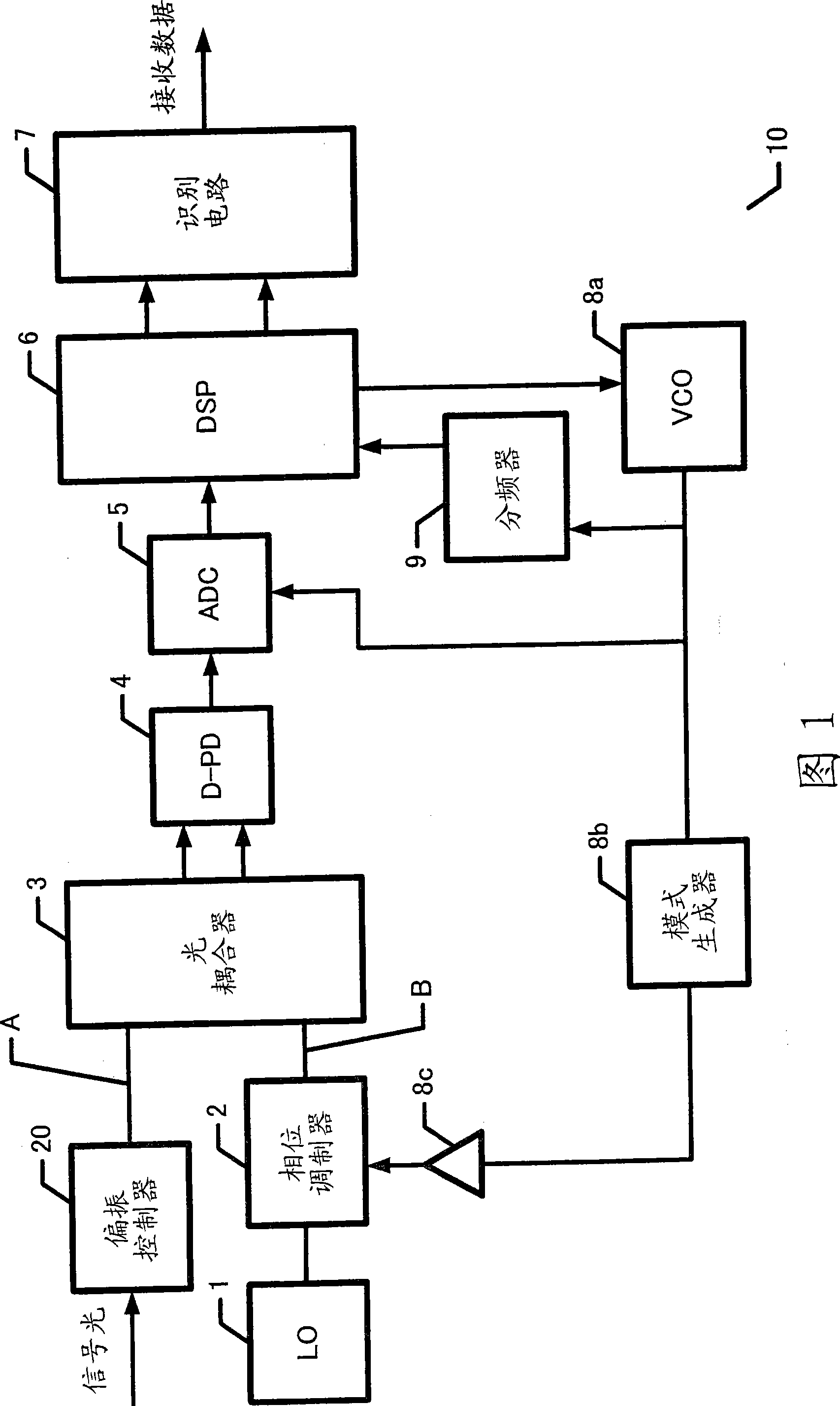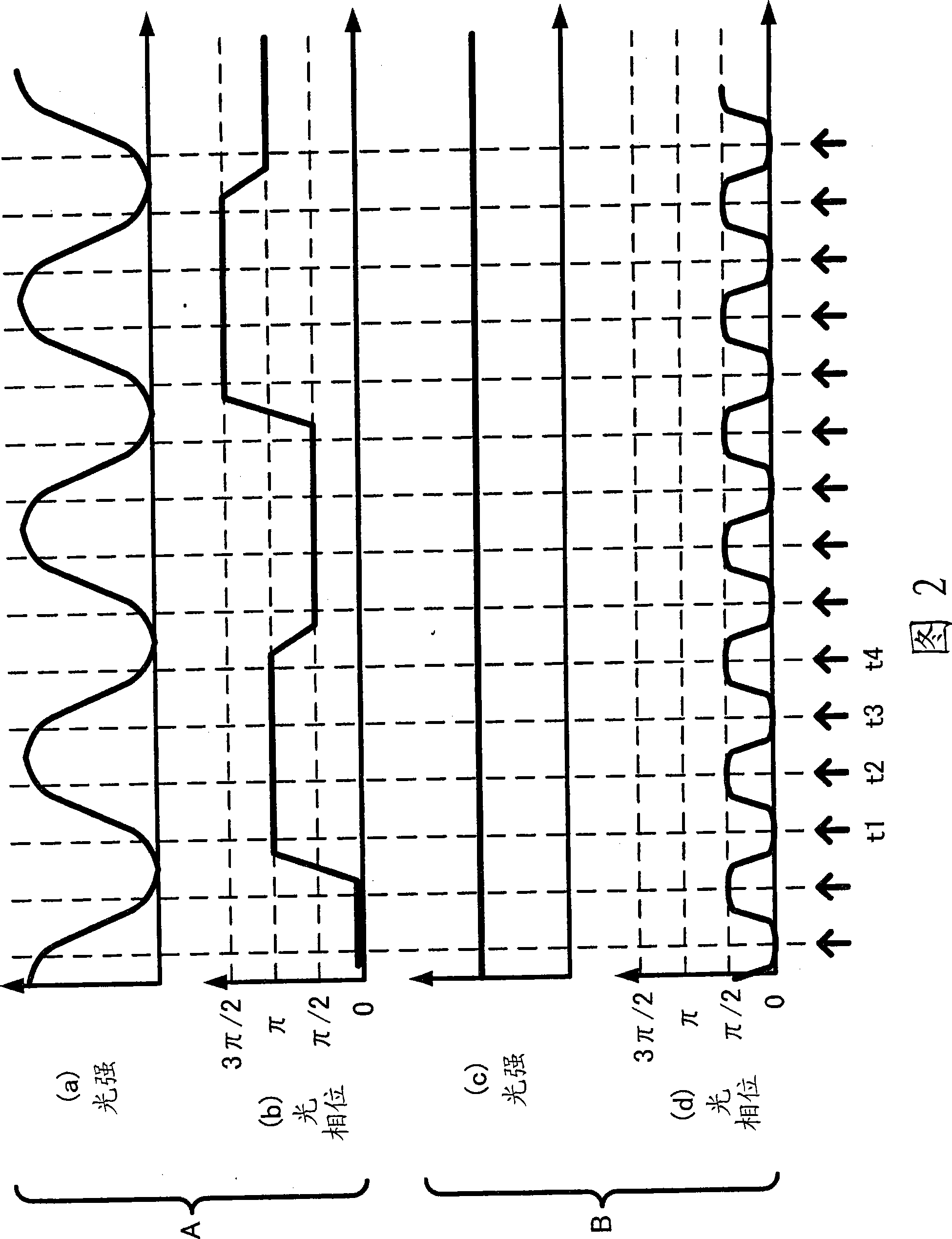Coherent light receiving system
A coherent optical and receiver technology, applied in the field of optical communication systems, can solve the problems of inability to achieve 40Gbps fast signal light and inability to receive, and achieve the effects of reduced size and simplified structure
- Summary
- Abstract
- Description
- Claims
- Application Information
AI Technical Summary
Problems solved by technology
Method used
Image
Examples
no. 1 approach
[0045] Fig. 1 shows a coherent optical receiver 10 according to a first embodiment. The coherent optical receiver 10 shown in FIG. 1 can be applied as the optical receiver 306 in the optical communication system 300 shown in FIG. 3 . Here, in the optical communication system 300 shown in FIG. 3 , the WDM transmitting device 301 is connected to the WDM receiving device 302 via the optical network 310 .
[0046] The wavelength division multiplexing transmission device 301 includes: a plurality of optical transmitters (T) 303 outputting optical signals having different wavelengths; and a wavelength multiplexer 304 . The optical transmitter 303 modulates light using multi-valued phase modulation such as DQPSK, QPSK, and QAM (Quadrature Amplitude Modulation), and outputs the modulated light as an optical signal. The wavelength multiplexer 304 multiplexes the optical signal from the optical transmitter 303 in the wavelength domain, and transmits the multiplexed light to the optical...
no. 2 approach
[0090] FIG. 6 is a block diagram showing a coherent optical receiver 10A according to a second embodiment of the present invention. The coherent optical receiver 10A shown in FIG. 6 can be applied as the receiver 306 shown in FIG. 3 and includes a modulated local light generator different from the coherent optical receiver (see reference numeral 200) shown in FIG. 15 11.
[0091] Referring to FIG. 6, a coherent optical receiver 10A includes: an identification circuit 7; a VCO 8a; and a frequency divider 9, which are basically the same as those according to the first embodiment. In addition, the coherent optical receiver 10A also includes: a modulated local light generator (LL GEN) 11; a 2×4 phase mixing circuit 12 as an optical mixer; a differential photodetector (D-PD) 13- 1 and 13-2; ADCs 14-1 and 14-2; digital signal processor 15; and repeating pattern generator 8e.
[0092] The modulated local light generator 11 outputs the local oscillator light for coherent light recep...
no. 3 approach
[0193] FIG. 12 is a block diagram showing a coherent optical receiver 10B according to a third embodiment of the present invention. The coherent optical receiver 10B shown in FIG. 12 can be used as the optical receiver 306 in FIG. 3 . Here, the coherent optical receiver 10B according to the third embodiment includes a polarization modulator (POL-MOD) 11A (see reference numeral 11 in FIG. 7 , 10 or 11 according to the second embodiment) for polarization modulation instead of The polarization controller 20 in the structure of the coherent optical receiver 10 according to the first embodiment.
[0194] Here, the coherent optical receiver 10B shown in FIG. 12, the LO1, and the phase modulator 2 form a first modulated light output unit for outputting light modulated with an optical frequency based on a second clock phase-synchronized with the first clock. light (local oscillator modulated light). By setting the received signal light as m-value modulated light (mPSK, mQAM, etc.) w...
PUM
 Login to View More
Login to View More Abstract
Description
Claims
Application Information
 Login to View More
Login to View More - R&D
- Intellectual Property
- Life Sciences
- Materials
- Tech Scout
- Unparalleled Data Quality
- Higher Quality Content
- 60% Fewer Hallucinations
Browse by: Latest US Patents, China's latest patents, Technical Efficacy Thesaurus, Application Domain, Technology Topic, Popular Technical Reports.
© 2025 PatSnap. All rights reserved.Legal|Privacy policy|Modern Slavery Act Transparency Statement|Sitemap|About US| Contact US: help@patsnap.com



